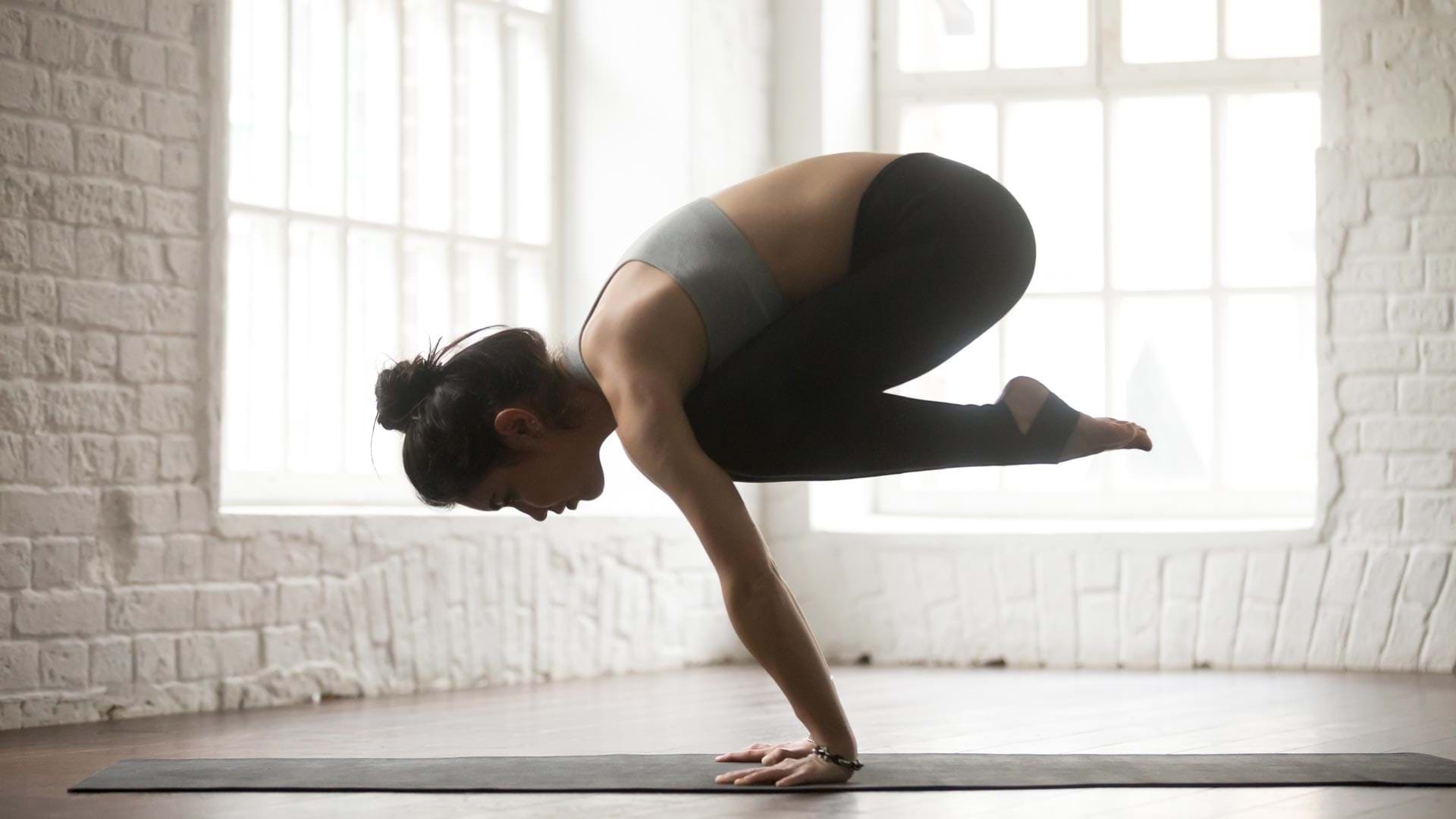Confession: I have an aversion to arm balances. Aversion (dvesha), according to the sutras, is just another flavor of attachment and one of the ways we create suffering in our lives. While I don’t think it’s necessary to practice Headstand or Handstand to be a “real” yogi, I do believe that real yoga means practicing equanimity. Confronting our aversions may reveal lessons about acquiring balance in our lives—but we have to start by greeting the challenge.
To approach arm balances, the first thing I needed to change, obviously, was my attitude. I tried a number of classic alignment tips (hand placement, position of pelvis; strengthen the arms, wrists and core, etc.) without achieving liftoff, so I began to ponder some new angles:
Building up.
Strength is in the mind as well as the body, and thinking of my arms and wrists as puny kept me earthbound. But go to the gym? Nah. Like old-school bodyweight exercises, yoga asanas include a number of strengthening moves that also help train the mind for more challenging asanas. Until you have the strength and control to practice Chaturanga safely, begin with Plank Pose and its variations, working your way up to Side Plank (Vasisthasana). Improve your shoulder mechanics in Downward-Facing Dog (Adho Mukha Svanasana), Cobra Pose (Bhujangasana) and Dolphin Pose (Ardha Pincha Mayurasana). Be patient and diligent, as the rewards are cumulative and confidence-building.
Break the pose down.
Demystify a challenging pose by looking at its major components for clues on how to prepare or modify. Take, for example, my least favorite arm balance: Bakasana (Crane Pose). It’s a balancing pose, but also an inversion and forward bend. Bakasana uses the arms as fulcrum for the body’s weight, which requires lightness, steadiness and stability. So rather than pouring my weight forward onto my arms, I started to lift my hips and buttocks while engaging my core—similar to what one might do in Uttanasana or Prasarita Padottanasana. Starting from a squat with a rolled mat underneath my heels also made it easier to find my fulcrum point and create a sensation of lift.
Inwardly sensing.
That magical moment when an asana “clicks” depends on proprioception (sensing where the body is in space) and interoception (recognizing the body’s internal signals). Preparatory poses help build sensing memory, but another way to get from A to B is to practice the pose with the help of props or a teacher or partner. I’ve used folded blankets to make falling less scary, experimented with furniture and walls for support, and enlisted others for spotting and feedback. After lots of trial and error, Crane Pose finally clicked for me with a simple shoulder adjustment.
Embodying the details.
It’s good to get out of your head, but not if it means losing track of the little things like—oh yeah!—breathing. Focus the gaze (drishti). Scan your body head to toe for pockets of forgetfulness (like lazy hands and feet) or tension, the result of over-compensating for fear or imbalance. Over time, detail awareness becomes a natural and organic part of practice rather than a conscious review.
Practicing with dedication.
Design a home practice with the above elements in mind, and commit to it. Be sure to sequence arm balances after warming up the wrists and shoulders, but before performing too many strength-building poses, which can tire the arm muscles. If turning upside-down is too much at this stage, no problem. The richness of an asana practice isn’t in nailing a pose; it’s in the small steps it took to get there and the mental training it takes to stay there when the pose starts to get uncomfortable again.
The deeper benefits? Learning how to approach a dreaded pose with equanimity can help us do the same with the challenging people and events in our lives.












